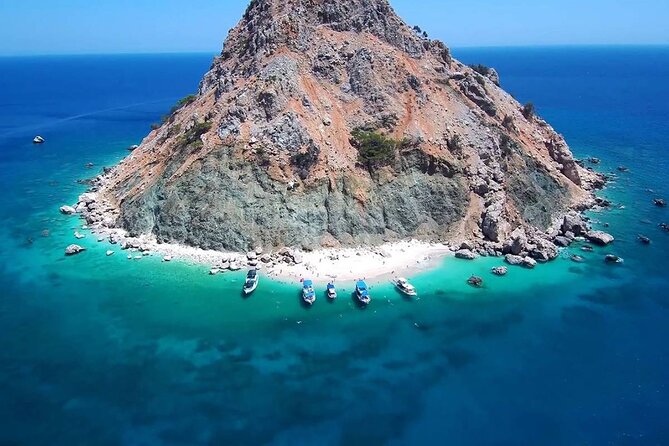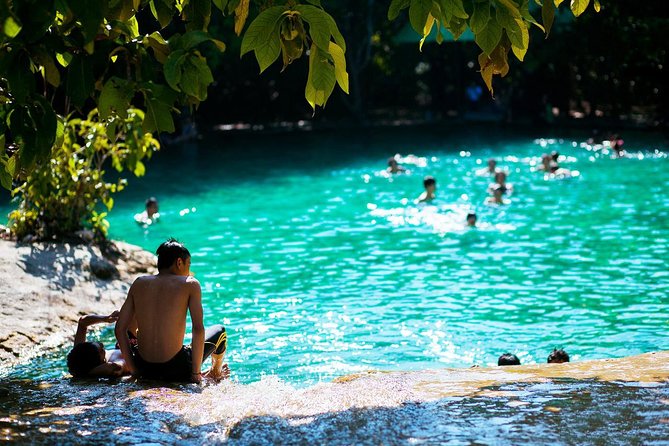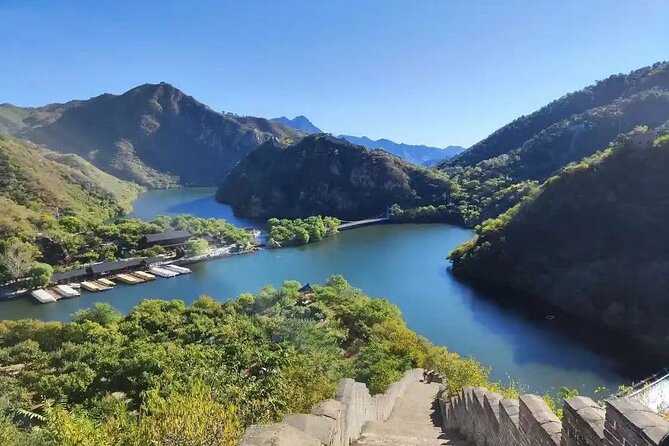Everest Base Camp: a Short Trek
Nestled in the lap of towering peaks, Everest Base Camp beckons adventurers to embark on a journey that promises not just physical challenges but also a profound connection with nature’s grandeur.
As trekkers lace up their boots and set foot on the legendary trails, they are met with a tapestry of experiences waiting to unfold. From the crisp mountain air to the camaraderie of fellow hikers, every step brings them closer to an unparalleled sense of accomplishment.
Each twist and turn reveals a new facet of this iconic trek, leaving them eager to uncover what lies beyond the next mountain pass.
Key Points
- Physical and mental preparation is crucial for conquering the Everest Base Camp trek.
- Immersion in Sherpa culture enhances the trekking experience.
- Personal growth and reflection are significant outcomes of reaching Everest Base Camp.
- Building lifelong friendships and support networks through shared triumphs on the trek.
Here's some more nearby activities we've reviewed
Essential Gear for High Altitude
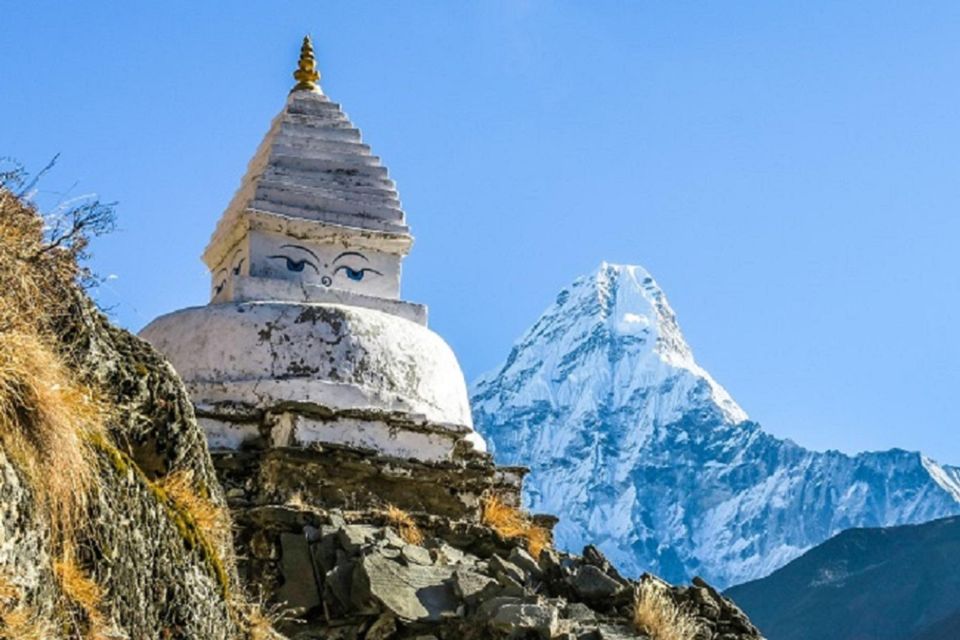
When preparing for high-altitude trekking, having the essential gear is crucial for ensuring safety and comfort throughout the journey. Altitude preparation is key, and hikers must equip themselves with gear essentials to tackle the challenges of the Himalayas. Items such as high-quality hiking boots with ankle support, moisture-wicking clothing, a down jacket for warmth, a reliable backpack, and a sturdy trekking pole are indispensable.
Plus, carrying a first aid kit, high-altitude sunscreen, sunglasses, a brimmed hat, and a refillable water bottle is essential for staying healthy and hydrated. Adequate preparation and the right gear can make all the difference in conquering the high-altitude terrain of the Everest Base Camp trek.
Preparing for Challenging Terrain
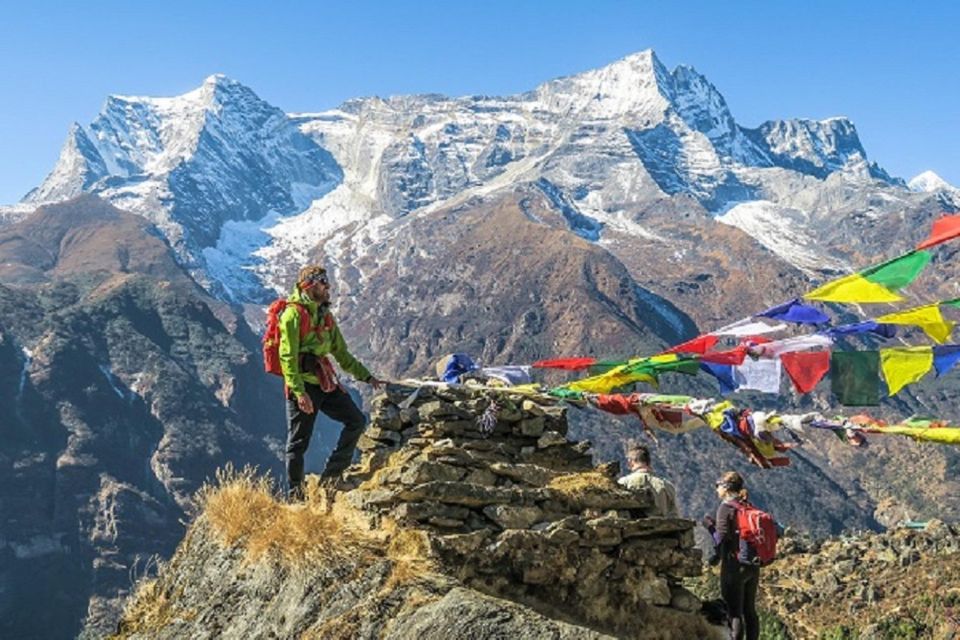
Navigating the challenging terrain of the Everest Base Camp trek requires hikers to be equipped with sturdy footwear and a resilient mindset to conquer the rugged Himalayan landscape. Physical training is crucial to build endurance and strength for the demanding trails, including uphill climbs and rocky paths. Mental preparation is equally vital, as trekkers will face high altitudes, unpredictable weather, and long hiking days. Here is a helpful table to highlight key aspects of preparing for the challenging terrain:
| Preparing for Challenging Terrain | Tips |
|---|---|
| Physical Training | Regular cardio workouts |
| Strength and endurance training | |
| Mental Preparation | Meditation and mindfulness |
| Positive visualization | |
| Mental resilience exercises |
Acclimatization Tips for Success
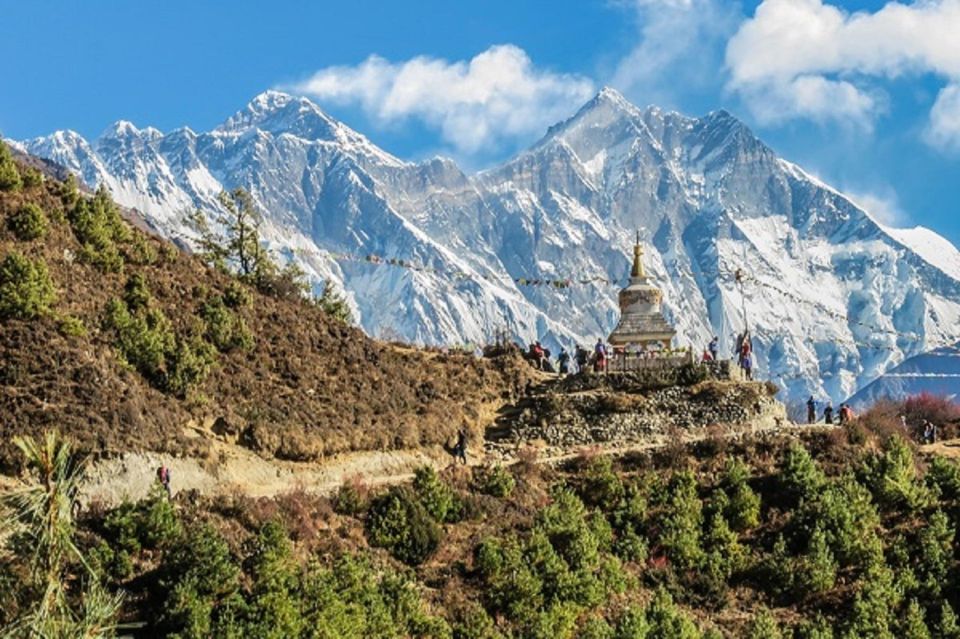
Preparing for the challenging terrain of the Everest Base Camp trek involves physical and mental readiness, essential for a successful acclimatization process at high altitudes. Altitude sickness, a common issue at elevated heights, can be mitigated by proper hydration. It’s crucial to drink plenty of water to help your body adjust to lower oxygen levels. Aim for at least 3-4 liters of water daily to combat dehydration and reduce the risk of altitude-related illnesses.
Plus, gradually ascending and taking rest days to acclimatize are key strategies to minimize the effects of high altitude. By following these acclimatization tips, trekkers increase their chances of a safe and enjoyable journey to Everest Base Camp.
Capturing Stunning Himalayan Views
To capture the stunning Himalayan views along the Everest Base Camp trek, trekkers should ensure their camera gear is ready for the breathtaking panoramas that await. The Himalayas offer a photographer’s paradise with their majestic peaks and ever-changing light conditions. It’s essential to consider photography techniques such as using a tripod for stability, adjusting aperture for depth of field, and experimenting with different angles to capture the essence of these towering mountains. Weather conditions play a crucial role in photography; be prepared for sudden changes and carry protective gear for your equipment. The table below summarizes key photography tips and weather considerations for capturing the beauty of the Himalayas.
| Photography Techniques | Weather Conditions |
|---|---|
| Use a tripod for stability | Be prepared for sudden weather changes |
| Adjust aperture for depth of field | Carry protective gear for your equipment |
| Experiment with different angles | Check weather forecasts regularly |
| Capture sunrise and sunset for stunning light | Dress in layers for varying temperatures |
Navigating the Khumbu Icefall Safely
Capturing stunning Himalayan views through the lens of a camera prepares trekkers for the next challenge of maneuvering the intricate terrain of the Khumbu Icefall with caution and precision. The Khumbu Icefall, a dynamic and hazardous section of the Everest Base Camp route, demands strict adherence to safety measures to ensure a successful passage. Trekkers must be vigilant and prepared for the following:
-
Icefall Hazards: Constantly shifting ice structures and crevasses pose significant threats to climbers. Understanding the risks and staying alert are paramount.
-
Safety Measures: Utilizing fixed ropes, helmets, and harnesses can enhance safety during the ascent and descent through the icefall.
-
Expert Guidance: Hiring experienced guides familiar with the icefall’s nuances can provide invaluable insights and increase overall safety for trekkers.
Cultural Immersion With the Sherpas
Enjoy the vibrant culture and traditions of the Sherpa people to truly enhance your Everest Base Camp trekking experience. The Sherpas, known for their mountain hospitality, have rich traditions that provide insight into their way of life. Engaging with Sherpa traditions can offer a profound cultural exchange during your journey. Here is a glimpse of what you may experience:
| Sherpa Traditions | Description | Impact |
|---|---|---|
| Festivals | Celebrate with dance and music | Connect with community |
| Prayer Flags | Colorful flags for blessings | Symbol of spirituality |
| Sherpa Cuisine | Taste traditional dishes | Explore local flavors |
| Monasteries | Visit sacred sites | Discover spiritual roots |
| Traditional Clothing | Learn about attire significance | Embrace cultural identity |
Savoring Local Cuisine on the Trail
As trekkers traverse the rugged paths towards Everest Base Camp, the aroma of local Sherpa cuisine beckons, offering a tantalizing culinary journey through the high-altitude trails. The Sherpa hospitality extends to the food served along the way, providing a taste of tradition and warmth amid the cold mountain air.
Trekkers can savor trailside delicacies that energize and comfort, such as:
-
Yak Butter Tea: A creamy and hearty beverage that warms the soul while providing essential nutrients for the journey.
-
Sherpa Stew: A hearty stew packed with local herbs, vegetables, and meat, offering a flavorful and filling meal after a long day of trekking.
-
Tsampa: A nutritious staple made from roasted barley flour, mixed with butter and water, providing a quick energy boost for weary hikers.
Reflecting on the Everest Base Camp Achievement
How does the accomplishment of reaching Everest Base Camp resonate with trekkers long after they return from the Himalayan journey? The achievement of standing at the base of the world’s highest peak often sparks profound reflections on personal growth and the bonds formed through team camaraderie. The sense of triumph over physical and mental challenges lingers, serving as a reminder of one’s resilience and determination. Trekkers find themselves reminiscing about the shared moments of struggle and triumph with fellow adventurers, creating lasting connections forged in the crucible of high-altitude trekking. Below is a visualization of the lasting impact of reaching Everest Base Camp:
| Personal Growth | Team Camaraderie |
|---|---|
| Self-discovery | Mutual support |
| Overcoming limits | Shared triumphs |
| Inner strength | Lifelong friendships |
Here's a few more nearby tours and experiences we have reviewed.
Common questions
Is Travel Insurance Recommended for This Trek to Everest Base Camp?
Travel insurance is recommended for any trek, providing benefits like coverage for medical emergencies and trip cancellations. While not mandatory, it offers peace of mind. At Everest Base Camp, safety precautions are crucial.
Are There Any Age Restrictions or Physical Fitness Requirements for Participating in This Trek?
Age restrictions: Participants must be 18 or older. Physical fitness: Moderate to high level required due to challenging terrain and altitude. Consult a doctor before booking. Trek involves long hours of walking daily.
What Is the Availability of Wi-Fi or Cell Phone Service Along the Trekking Route?
Wi-fi availability and cell phone service are limited along the trekking route. Travelers should anticipate intermittent connectivity, allowing for a digital detox amidst the rugged beauty of the Himalayas. Disconnect to reconnect with nature’s grandeur.
How Are Emergency Situations Handled During the Trek, Such as Altitude Sickness or Injuries?
In case of emergencies like altitude sickness or injuries during the trek, altitude acclimatization is crucial. Guides monitor participants, providing medical aid when needed. Emergency evacuation procedures are in place to swiftly address serious situations.
Are There Any Specific Environmental Conservation Guidelines or Initiatives in Place for Visitors to Follow While Trekking in the Everest Region?
When trekking in the Everest region, visitors should adhere to specific environmental conservation guidelines. These include minimizing environmental impact, practicing proper waste management, and respecting local customs. It’s essential to leave no trace and preserve the natural beauty of the area.
Here's more of our most recent tour reviews happening neaby
- Classic Everest Base Camp Hike
- Everest Base Camp Short Trek
- From Lukla: 9 Day Everest Base Camp With Kala Patthar Trek
- Everest Base Camp Trek : 15Days
- Everest Helicopter Tour With Guaranteed Landing One Day
- Everest Base Camp Trek Back by Helicopter
- From Kathmandu Budget: 15 Day Everest Base Camp Trek
- Everest Helicopter Landing Tour
- Everest Base Camp Trek: 12 Days
- Everest Base Camp Trekking – 15 Days
- Everest Base Camp Comfort Trek – 18 Days
Last Words
Embark on the adventure of a lifetime and conquer Everest Base Camp with confidence and determination.
From essential gear to culture, this trek offers a unique blend of challenge and beauty.
With the guidance of experienced tour guides and the support of the Sherpa community, every step towards the world’s highest peak is a testament to human resilience and the spirit of exploration.
Don’t miss out on this unforgettable journey to the top of the world.
More Great Things To Do Nearby
